Howdy, Stranger!
It looks like you're new here. If you want to get involved, click one of these buttons!
Quick Links
Undiscovered Knowledge about 1942-P Type Two Nickels (Proofs)
I have posted this at PCGS and NGC, and had no intention of posting it here, but figured a few here might like a change of pace from what's normally on the front page here:
I made this pretty cool (to me) discovery in a bit of research I was doing on the 1942 and 1942-P proof nickels. Using CoinFacts and Roger Burdette's die tables and book United States Proof Coins 1936-1942 for these two coins, I noticed a die variety that Roger pointed out carries on into the later half of 1942 proof nickel production and is used for CU-AG-MN coins.
A bit of background - 1942-P copper-silver manganese nickels were a major burden for the medal department. Only 47.6 percent of the coins struck by the dies ever made it past quality control. This is a major reduction from the 88% the CU-NI nickels had earlier in the year.The alloy of CU-NI-MN was brittle and prone to cracking. The high pressure strike of the medal press likely caused the alloy to crack more and caused more failed coins. Half the success usually meant extra dies. Dies were expensive, so if there were dies to be used, the mint would use them. The mint did just that in 1942 - it used Type One obverse dies to strike Type Two coins.
I started with what I knew. There was a proof Type One nickel obverse die with a die chip that was easily visible, circled here:
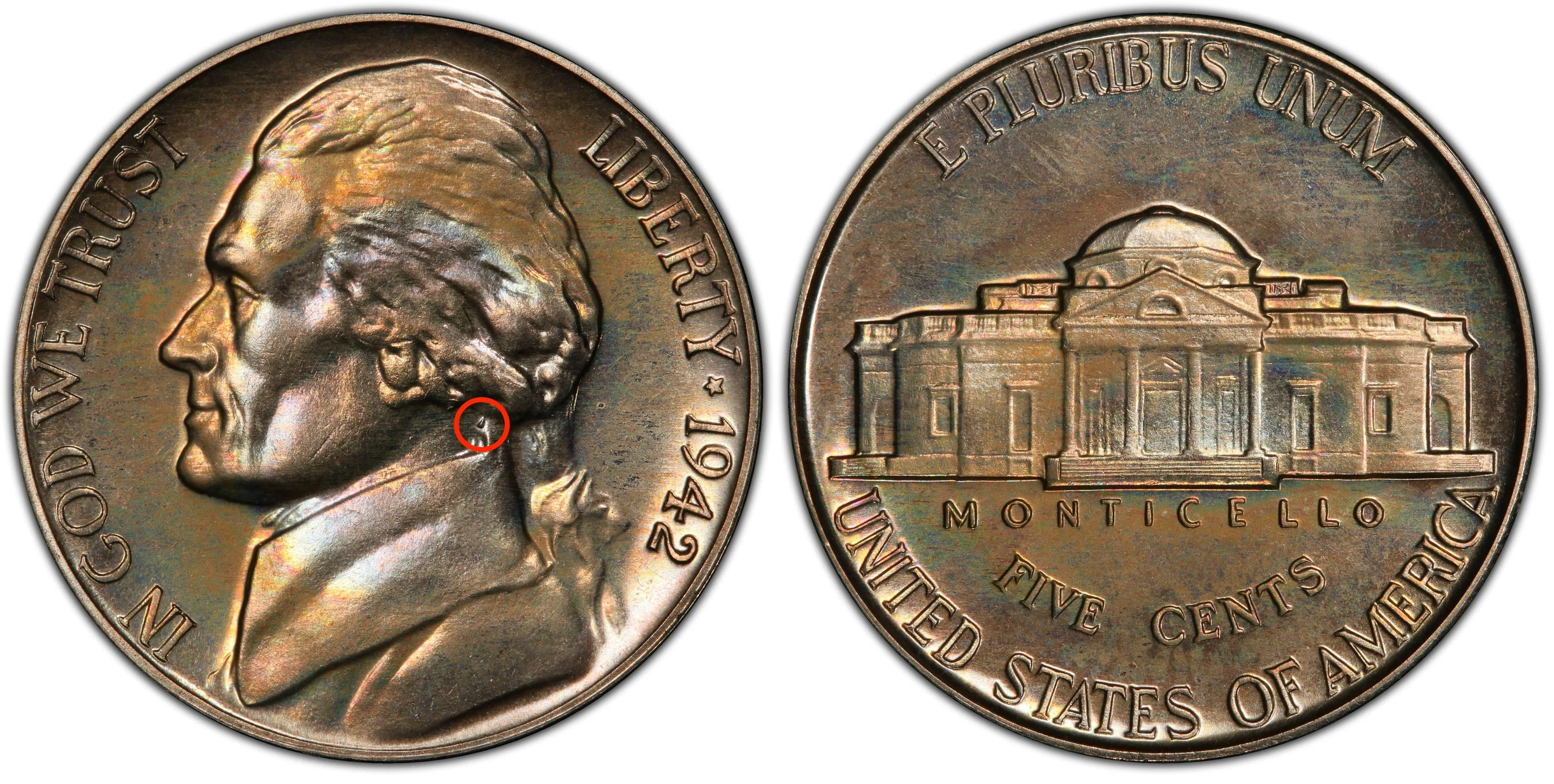
A Type Two example has the same die chip here:
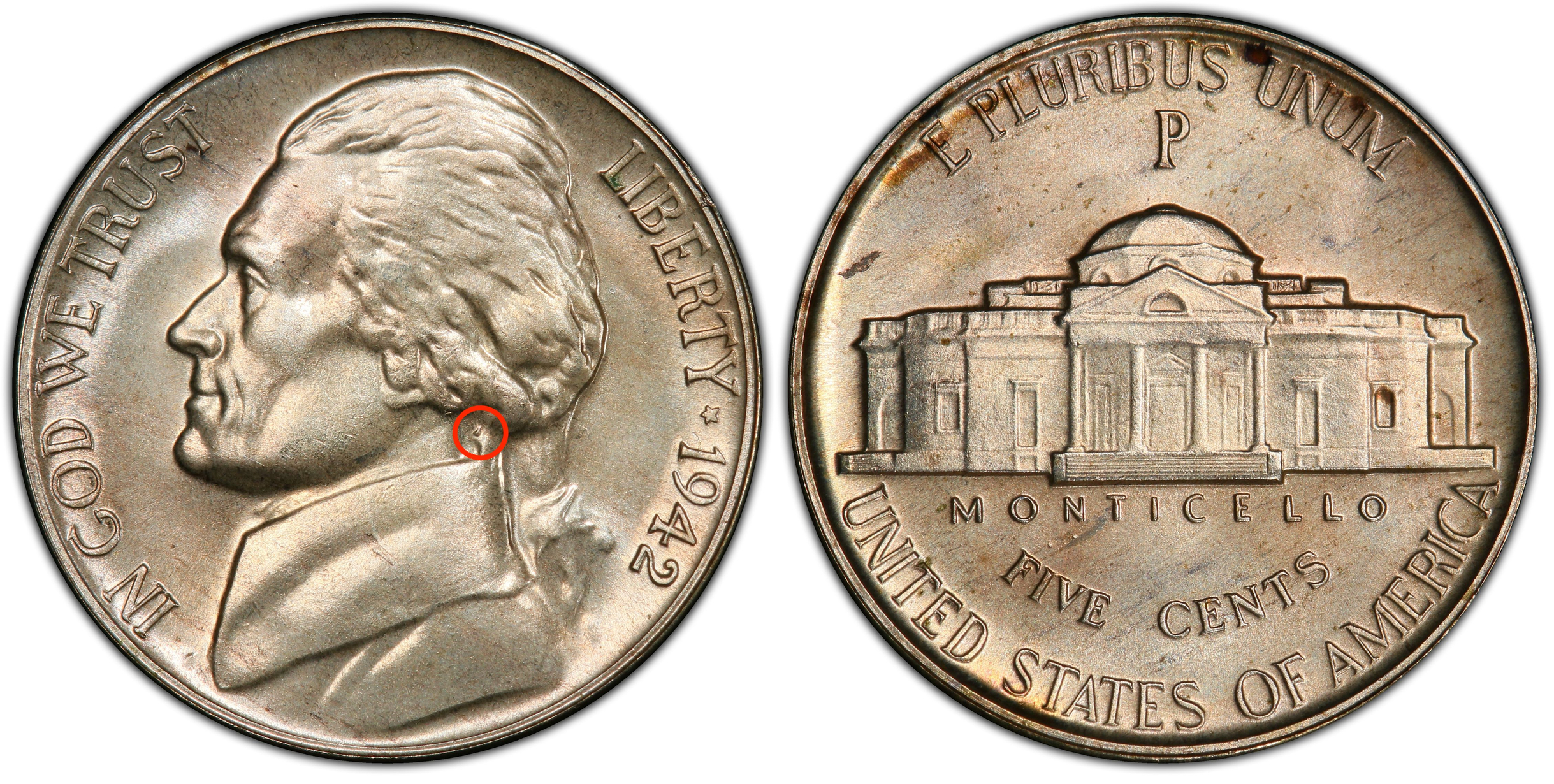
I wanted to figure out what day the coins with the chip were struck on. I had little to go off of but this:
In October, the mint began striking the Type 2 nickels in proof. They used three old obverse dies from the Type One proofs, die numbers 122, 124, and 456. I'll break down what number of coins each die struck:
122- 6,385 CU-NI, 1,500 CU-AG-MN (First Used Oct 10 for silver alloy coins)
124- 5,190 CU-NI, 1,000 CU-AG-MN (First Used Oct 20 for silver alloy coins)
456- 3,300 CU-NI, 3,900 CU-AG-MN (First Used Oct 23 for silver alloy coins)
One of these dies had to be the one with the die chip. I compared how many coins of of each type one and type two proofs had the die crack. I came up with about 9 percent Type Two coins and roughly 28% Type One coins. By doing some math with the amount of coins struck with obverse dies and the percent we get:
T1 with chip - .28 * 25,895 total coins struck by an obverse die = 7250 coins with chip struck
T2 with chip - .093 * 19,550 total coins struck by an obverse die = 1818 coins with chip struck
Well, we now know a ballpark estimate of what we should be looking for. From this, we can rule out Die Number 456 as it doesn't even get close to out estimate. The other two dies are too close to call.
Now we get to the real detective work. Dies 122 and 124 are nearly identical. I believe I found examples of both dies in the Type One format, and the only difference is the die chip. They both seem to pop up at about the same rate and look very similar.
Here is where I'll throw in the comparison of Dies #122 and #124 (In my experience and opinion on #124 based on what I've seen - I could almost prove it but don't feel the need.) I will prove die #122 has the chip later on.
Die #122 (Obverse)
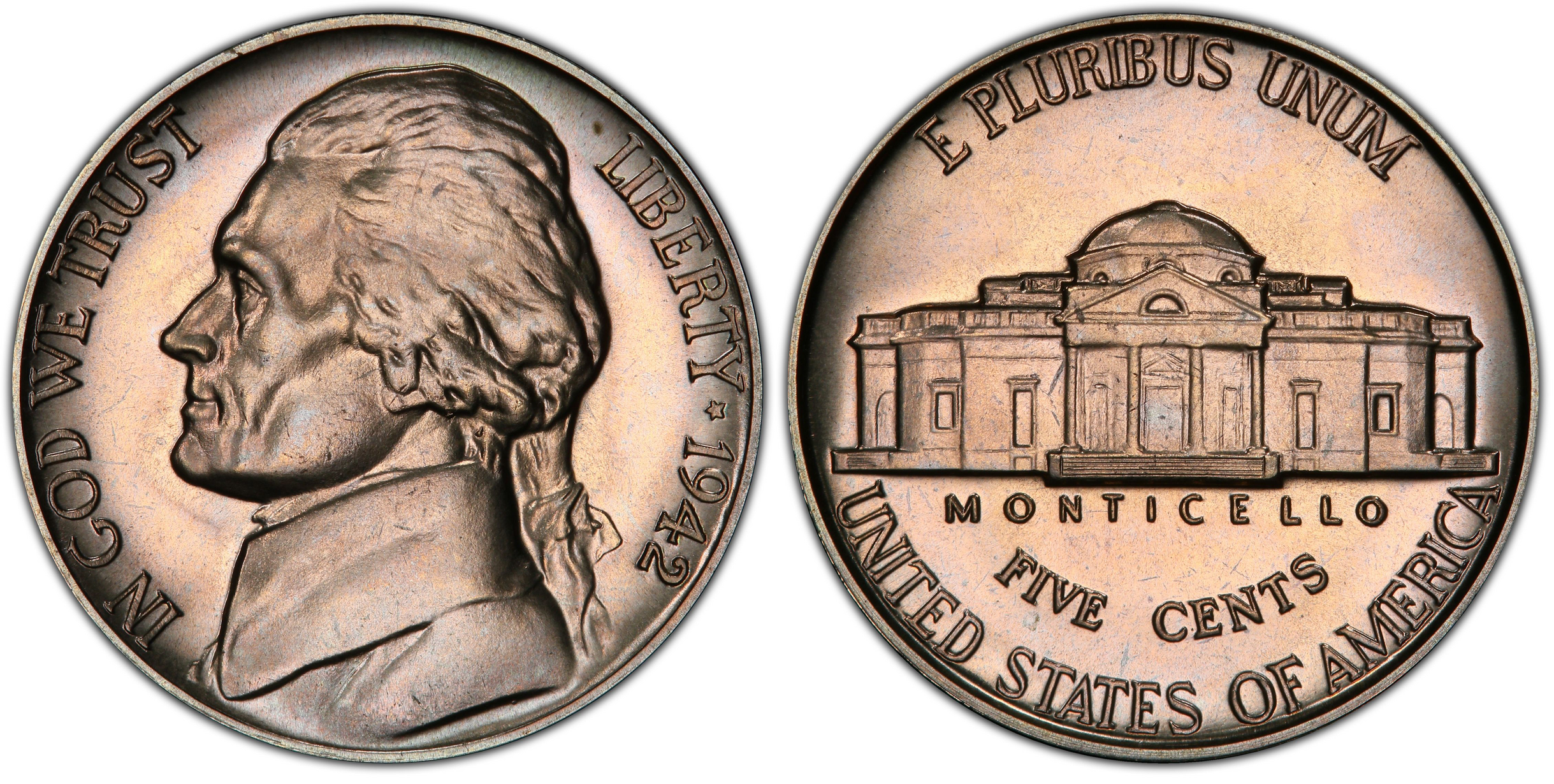
Die #124 (Obverse)
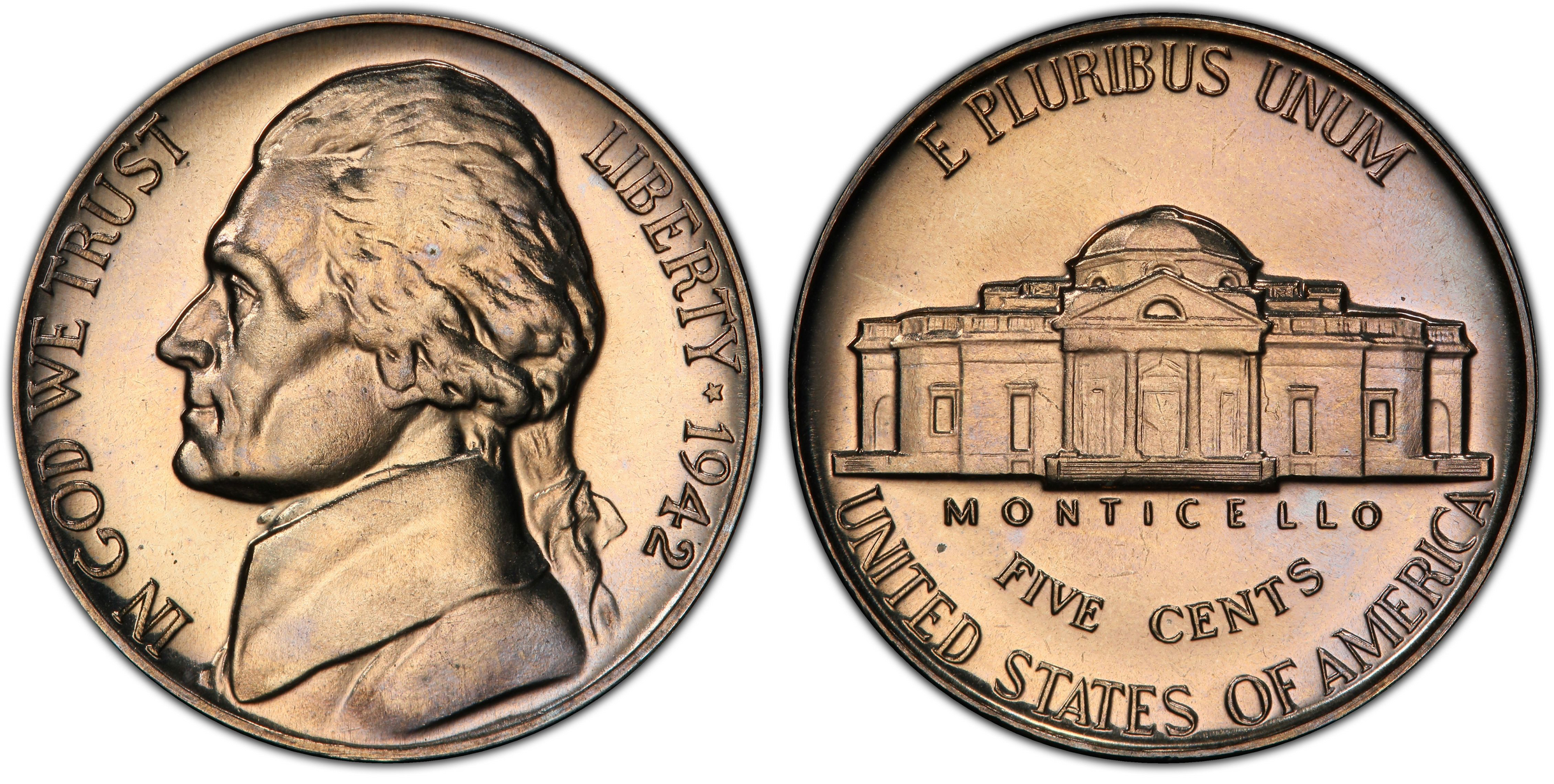
I couldn't match anything based on reverse die usage. Both obverse dies were paired with the same reverse dies (one exception, but I had no luck finding a coin from that exception) for the Type One format. I had to turn to the dies in the Type Two format. I knew that they were paired with the new reverse dies 387 and 388, respectively.
The 122/387 combo would prove to be the saving grace needed to identify the striking date. Both dies were condemned after one day of usage, so those two reverse dies are the only two that need to be focused on. Die 387 is noted later as condemned for being "Worn out", while die number 388 (paired with obverse 124) is condemned as "Cracked".
We immediately notice some lettering weakness on the die chip 1942 Type Two Proofs, shown here - this is suggestive of reverse die #387 and it will prove to be reverse die #387:
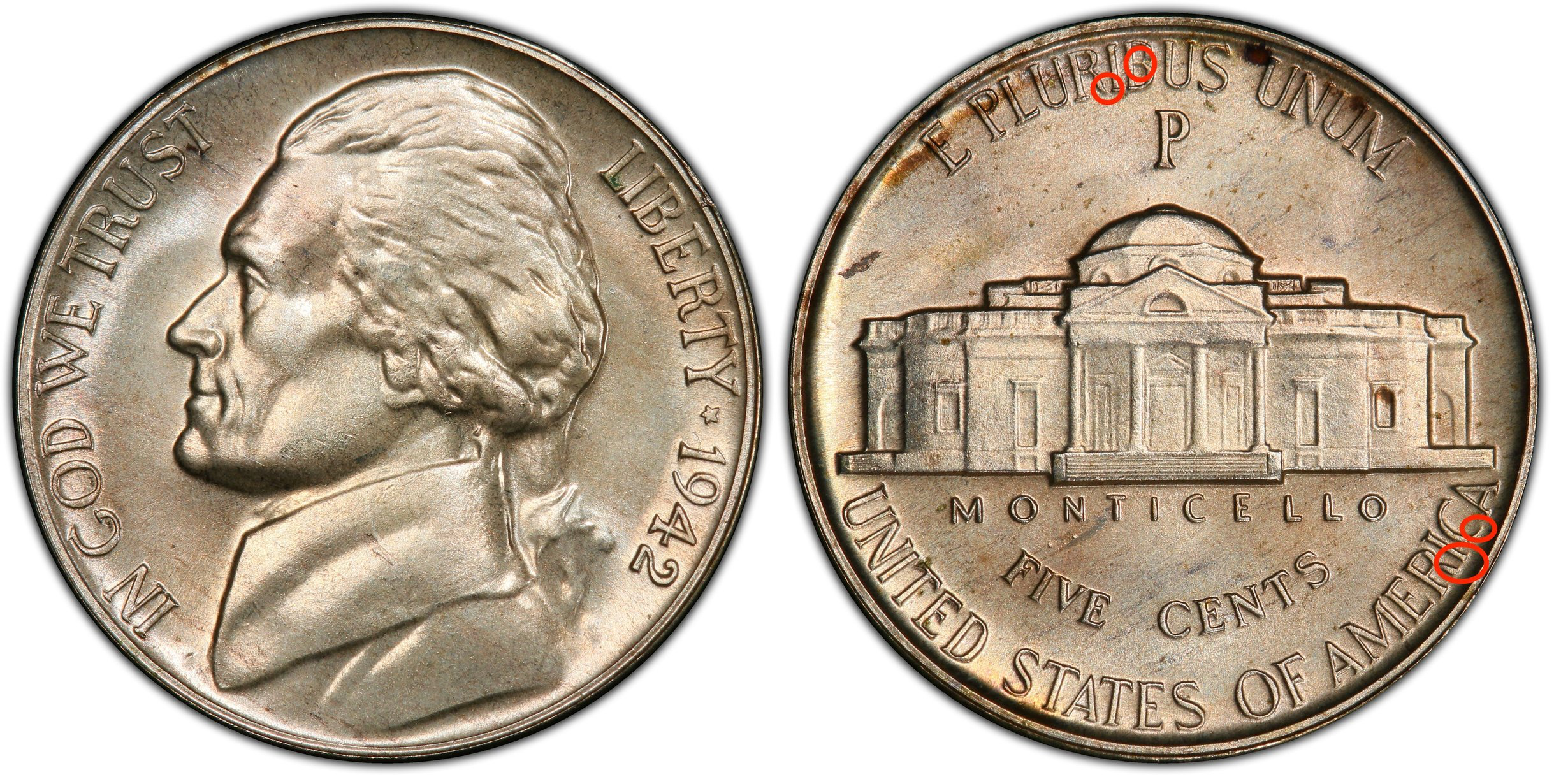
It's not bad, but remember - this die is brand new. Any weakness of this caliber on a brand new die is to be noted. We also know that at the time die #387 was condemned, it was paired with an obverse die that was also condemned for "Worn Out - Pig Tail." This "Pig Tail" refers to Jefferson's queue. The obverse it was paired with was used solely on CU-AG-MN coins for those wondering. I was able to find an example of that pairing (457 obverse/387 reverse pre condemnation):
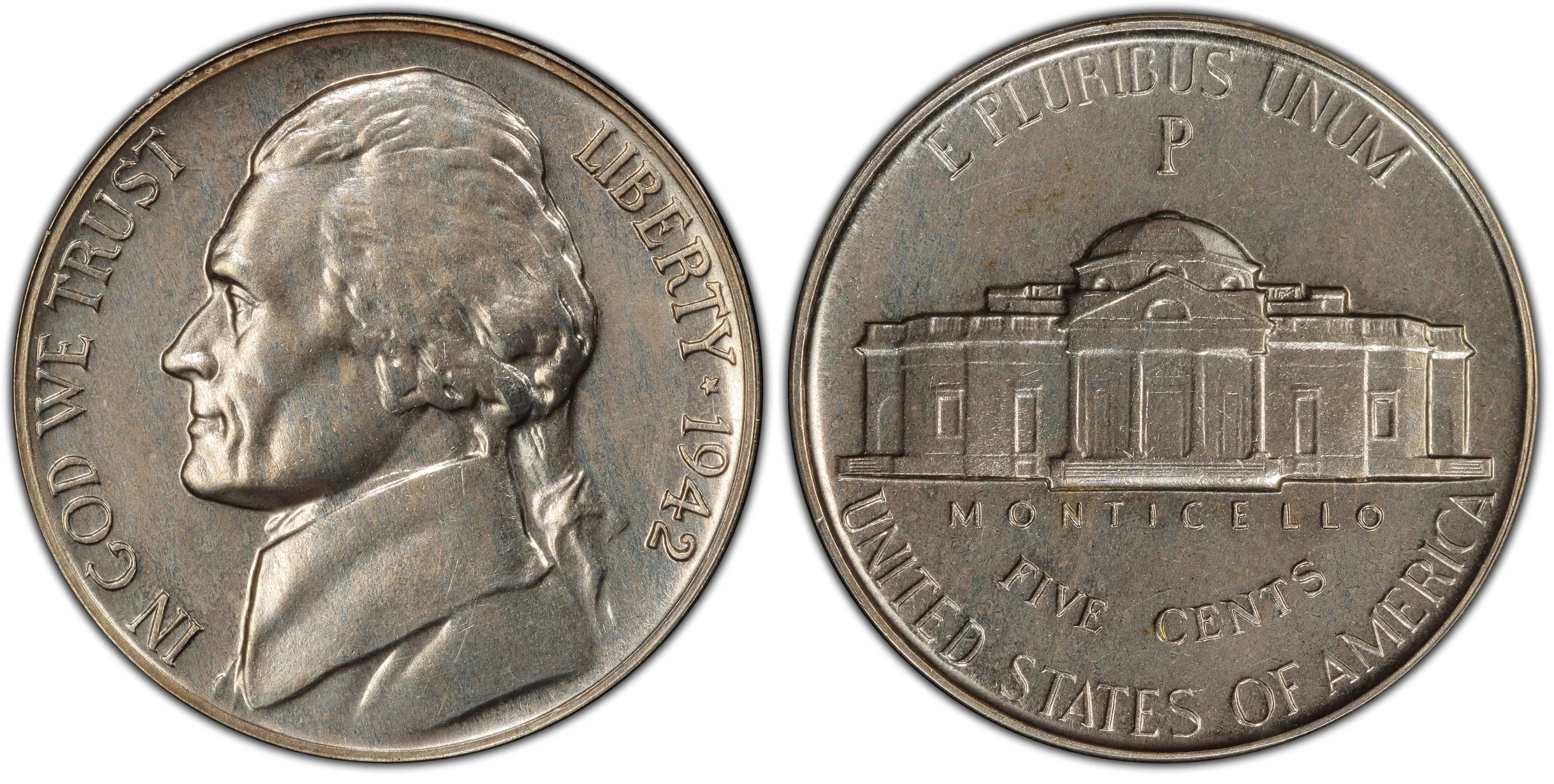
You'll immediately notice the weakness is in the same areas circled above, but worse after multiple repolishes. We know definitively that the reverse die that the die chipped die (obverse) was paired with is number 387. That die is #122. Mystery solved!
To offer further proof, we know that reverse die #387 struck 5,300 coins (most of any reverse die for T2). By doing some math, I concluded that roughly 35% of the CoinFacts coins were struck by die #387. This comes out to roughly 7,000 or so coins, which corroborates what I was saying (known populations won't exactly mirror what the data should say, but it should still fit).
Secondly, if you think or scroll back to the picture I posted of die #124, you'll probably notice the similarities here to it, paired with a reverse die for a T2 nickel without any letter weakness:
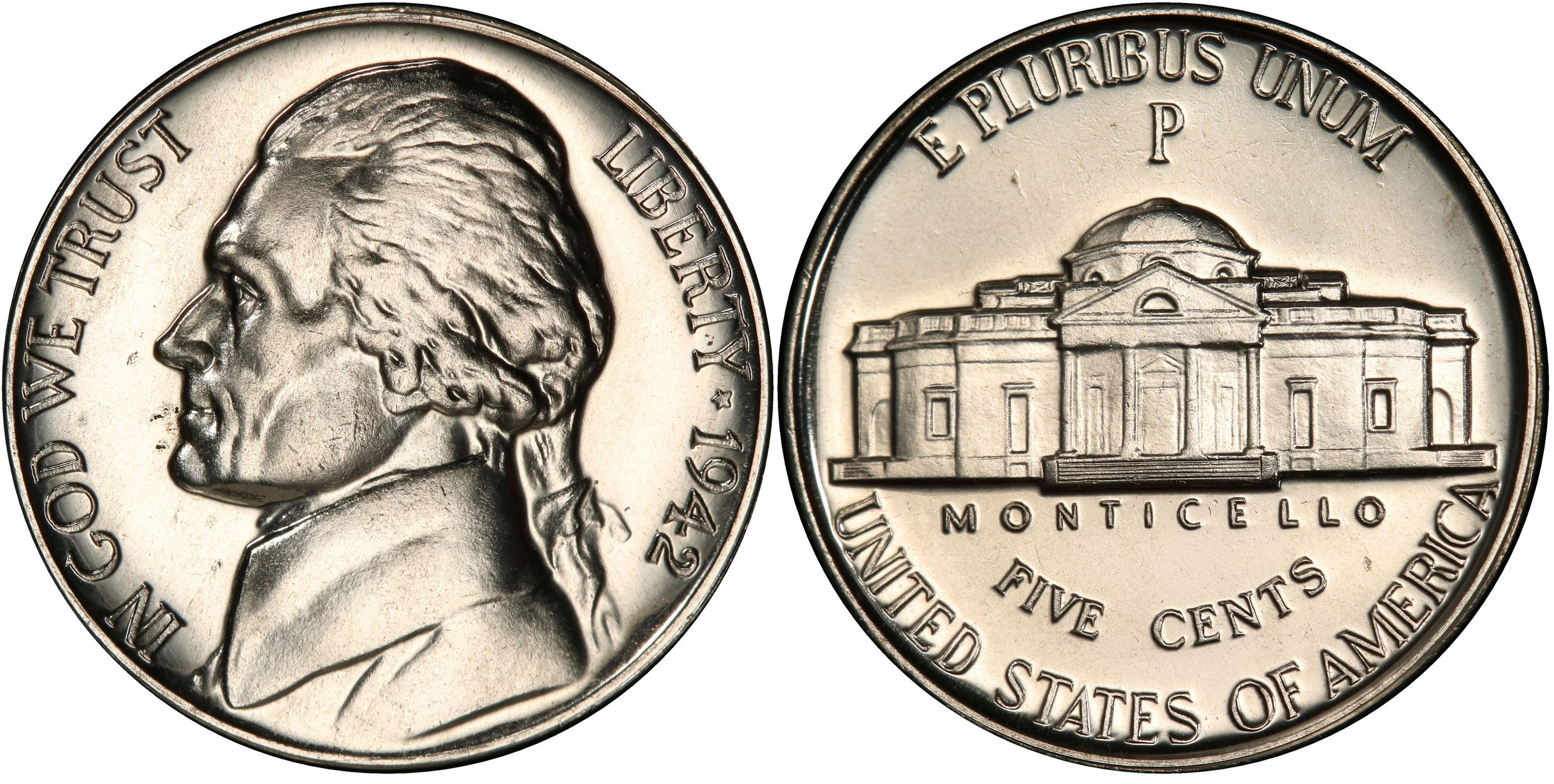
I do believe the die was repolished before use as a T2 obverse, which accounts for slight detail change. However, we know that die #388 was condemned for cracking rather than weak lettering, so the sight of a coin with a strong reverse is further support. You can also see what appears to be a die chip in the upper left obverse field, as well as some seemingly minor micro-cracks in the upper reverse field. This would indicate the reason reverse die #388 was condemned - cracking.
With this information, if you have a die chipped 1942 Proof Type Two Nickel, you know it was struck on October 10th, 1942.
I made this pretty cool (to me) discovery in a bit of research I was doing on the 1942 and 1942-P proof nickels. Using CoinFacts and Roger Burdette's die tables and book United States Proof Coins 1936-1942 for these two coins, I noticed a die variety that Roger pointed out carries on into the later half of 1942 proof nickel production and is used for CU-AG-MN coins.
A bit of background - 1942-P copper-silver manganese nickels were a major burden for the medal department. Only 47.6 percent of the coins struck by the dies ever made it past quality control. This is a major reduction from the 88% the CU-NI nickels had earlier in the year.The alloy of CU-NI-MN was brittle and prone to cracking. The high pressure strike of the medal press likely caused the alloy to crack more and caused more failed coins. Half the success usually meant extra dies. Dies were expensive, so if there were dies to be used, the mint would use them. The mint did just that in 1942 - it used Type One obverse dies to strike Type Two coins.
I started with what I knew. There was a proof Type One nickel obverse die with a die chip that was easily visible, circled here:

A Type Two example has the same die chip here:

I wanted to figure out what day the coins with the chip were struck on. I had little to go off of but this:
In October, the mint began striking the Type 2 nickels in proof. They used three old obverse dies from the Type One proofs, die numbers 122, 124, and 456. I'll break down what number of coins each die struck:
122- 6,385 CU-NI, 1,500 CU-AG-MN (First Used Oct 10 for silver alloy coins)
124- 5,190 CU-NI, 1,000 CU-AG-MN (First Used Oct 20 for silver alloy coins)
456- 3,300 CU-NI, 3,900 CU-AG-MN (First Used Oct 23 for silver alloy coins)
One of these dies had to be the one with the die chip. I compared how many coins of of each type one and type two proofs had the die crack. I came up with about 9 percent Type Two coins and roughly 28% Type One coins. By doing some math with the amount of coins struck with obverse dies and the percent we get:
T1 with chip - .28 * 25,895 total coins struck by an obverse die = 7250 coins with chip struck
T2 with chip - .093 * 19,550 total coins struck by an obverse die = 1818 coins with chip struck
Well, we now know a ballpark estimate of what we should be looking for. From this, we can rule out Die Number 456 as it doesn't even get close to out estimate. The other two dies are too close to call.
Now we get to the real detective work. Dies 122 and 124 are nearly identical. I believe I found examples of both dies in the Type One format, and the only difference is the die chip. They both seem to pop up at about the same rate and look very similar.
Here is where I'll throw in the comparison of Dies #122 and #124 (In my experience and opinion on #124 based on what I've seen - I could almost prove it but don't feel the need.) I will prove die #122 has the chip later on.
Die #122 (Obverse)

Die #124 (Obverse)

I couldn't match anything based on reverse die usage. Both obverse dies were paired with the same reverse dies (one exception, but I had no luck finding a coin from that exception) for the Type One format. I had to turn to the dies in the Type Two format. I knew that they were paired with the new reverse dies 387 and 388, respectively.
The 122/387 combo would prove to be the saving grace needed to identify the striking date. Both dies were condemned after one day of usage, so those two reverse dies are the only two that need to be focused on. Die 387 is noted later as condemned for being "Worn out", while die number 388 (paired with obverse 124) is condemned as "Cracked".
We immediately notice some lettering weakness on the die chip 1942 Type Two Proofs, shown here - this is suggestive of reverse die #387 and it will prove to be reverse die #387:

It's not bad, but remember - this die is brand new. Any weakness of this caliber on a brand new die is to be noted. We also know that at the time die #387 was condemned, it was paired with an obverse die that was also condemned for "Worn Out - Pig Tail." This "Pig Tail" refers to Jefferson's queue. The obverse it was paired with was used solely on CU-AG-MN coins for those wondering. I was able to find an example of that pairing (457 obverse/387 reverse pre condemnation):

You'll immediately notice the weakness is in the same areas circled above, but worse after multiple repolishes. We know definitively that the reverse die that the die chipped die (obverse) was paired with is number 387. That die is #122. Mystery solved!
To offer further proof, we know that reverse die #387 struck 5,300 coins (most of any reverse die for T2). By doing some math, I concluded that roughly 35% of the CoinFacts coins were struck by die #387. This comes out to roughly 7,000 or so coins, which corroborates what I was saying (known populations won't exactly mirror what the data should say, but it should still fit).
Secondly, if you think or scroll back to the picture I posted of die #124, you'll probably notice the similarities here to it, paired with a reverse die for a T2 nickel without any letter weakness:

I do believe the die was repolished before use as a T2 obverse, which accounts for slight detail change. However, we know that die #388 was condemned for cracking rather than weak lettering, so the sight of a coin with a strong reverse is further support. You can also see what appears to be a die chip in the upper left obverse field, as well as some seemingly minor micro-cracks in the upper reverse field. This would indicate the reason reverse die #388 was condemned - cracking.
With this information, if you have a die chipped 1942 Proof Type Two Nickel, you know it was struck on October 10th, 1942.


Comments